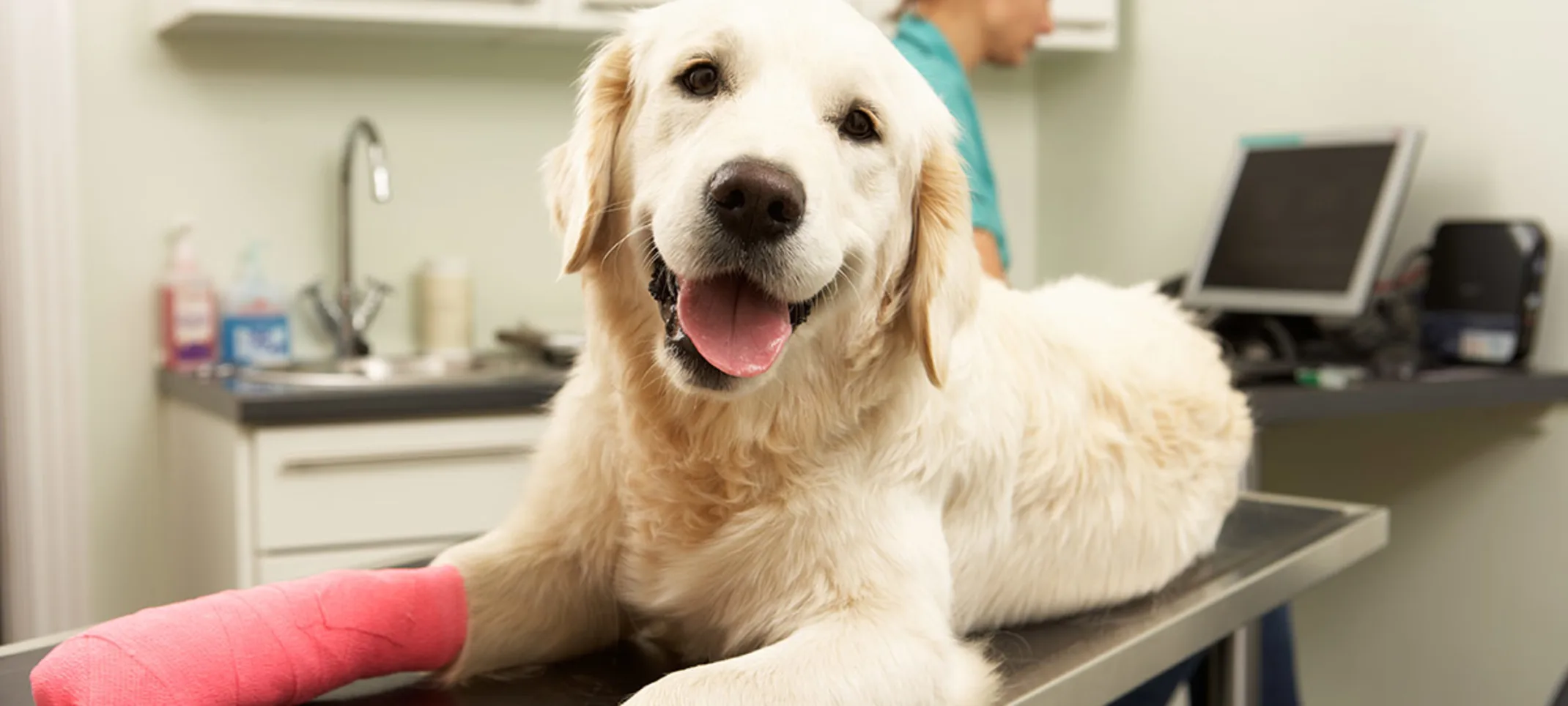Santa Clara Animal Hospital
Orthopedic Surgery
Orthopedic surgery can help pets who suffer from joint problems, torn ligaments, broken bones, and even help correct congenital problems.

Overview
Orthopedic surgery treats bones, joints, ligaments, and muscles—areas in which your pet may feel pain in from a variety of conditions. If veterinary orthopedic surgery is recommended for your pet, we will do everything possible to keep them safe and comfortable before, during, and after the surgery.
Why would my pet need orthopedic surgery?
Orthopedic surgery can help animals who suffer from joint problems, torn ligaments, broken bones, and can even help correct congenital problems.
When should I seek orthopedic care for my pet?
Pay attention to the way your pet is moving around, any unusual changes may mean they have an orthopedic condition.
Typical symptoms of an orthopedic disorder include difficulty getting up, non-weight bearing lameness, favoring a leg intermittently when walking, limping - swelling in the leg, stiffness or decreased activity level. If you notice any of these problems, you should take your pet to our facility for an examination.
How are typical orthopedic injuries treated?
A fracture is a break in the bone or cartilage and can be repaired from simple external splinting to more advanced internal plating. Fractures are typically caused by trauma, a disease or tumor in the bone, or stress applied to a certain bone.
Luxating Patella Surgery
Patellar luxation is a dislocated knee cap and most commonly seen in small breed dogs. Most patellar luxation occurs when the patella displaces from its normal position to the inside or outside of the normal knee position. Pets with this condition may have an intermittent non-weight bearing lameness and you may even hear a popping noise in their knee. There are many ways to treat this condition. Depending on the severity and the grade of the condition, multiple modalities can be used to correct this condition. Including, but not limited to, soft tissue reconstruction with para patella releasing arthrotomy, retinacular imbrication, and anti-rotational sutures. If the depth of the trochlear groove is inadequate a deeper groove can be created (trochleoplasty) so the kneecap (patella) can sit in a normal position. Each luxation patient has different properties that affect the knee. Thus each patient is evaluated for an individualized repair to successfully restore the anatomy and function of the stifle (knee) joint.
Cranial Cruciate Rupture / Collateral Ligament Rupture
Cranial cruciate ligament rupture is a common problem in medium to large breed dogs. These dogs can present with a sudden nonweightbearing lameness in a rear leg. Or they may have intermittent nonweightbearing lameness and possibly a popping noise in the knee. Untreated, this condition will contribute to degenerative joint disease, long-term pain, meniscal damage, muscle atrophy, decreased range of motion, and exercise intolerance. At Santa Clara Animal Hospital, our preferred method of treatment is the Modified Retinacular Imbrication Technique. This is a procedure that our surgeon has been performing multiple times a week for 30 years. Unlike the TPLO, the method we use does not require fracturing the bone or leaving a bone plate in the patient. This type of repair reconstructs the same plane of tension created by the original cruciate ligament. With a method that provides superior strength to the knee, while restoring normal anatomical function. This is an extremely effective repair for this type of injury if a patient has collateral ligament or meniscal damage that can be repaired at the same time.
Our veterinarians adhere to the highest level of care standards for all surgical procedures. Our highly skilled doctors place the utmost emphasis on pain management to ensure your pet is safe and comfortable throughout the treatment process. Using advanced technology, your pet's vital signs are monitored by our veterinary technicians, who will remain with your pet through recovery.
